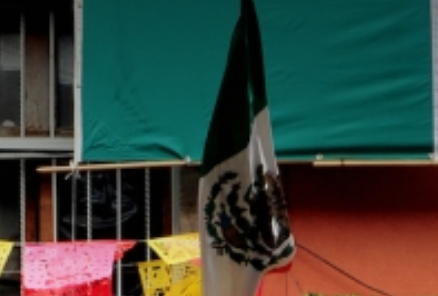Annyeong Bitcoin: South Korea, Canada and a Changing Crypto Market

Cryptocurrencies are a unique financial asset class.
For one, they do not simply live within national borders. They trade frictionlessly around the globe, and, whether you live in America or Armenia, Canada or Cameroon, the process of buying, selling and trading cryptocurrencies is essentially identical.
And yet the exchanges most investors use for cryptocurrency trading are bound by the regulations of the country in which they’re domiciled. Moreover, if trade volume in a single country is high enough, it’s likely that the market structure of that country’s exchanges, and, by extension, that country’s regulatory regime, could have a price impact on cryptocurrencies.
Korea rising
Looking back on last week’s market action, there’s perhaps no better country that illustrates this truth than South Korea, where lawmakers are close to following Japan in becoming the latest to formally carve out rules for bitcoin in national law.
Perhaps in response, Korea’s markets are waking up – big time.
Ripple

Last week, investors in Ripple’s native XRP token saw their positions nearly double when the price exploded, flirting with a $0.30 price level, a jump in price of roughly 90 percent from the previous week’s low.
While the price of XRP was taking off, more than 70 percent of its trade volume was being transacted on South Korean exchanges. In fact, three of the top four exchanges by trade volume were located in South Korea, according to data from CoinMarketCap.
To put that massive South Korean volume share in perspective, on Friday about 7 percent of bitcoin volume was executed on South Korean exchanges, with only one South Korean exchange, Bithumb, ranking in the top 10 for bitcoin volume.
Another way to understand the significance is to compare South Korea’s share of the Ripple trade volume to the prior week’s aggregate numbers.
During the week of Monday, August 14, as XRP’s price remained range-bound between $0.15 and $0.17, its trade volume remained flat, peaking just above $200 million.
But last week, as Ripple was near its high of almost $0.30, the dollar volume shot up to $2.25 billion – more than 10 times the high volume mark of the previous week, and more than 40 times the prior week’s low.
Bitcoin cash
Two weeks ago, a similar trend was observed with bitcoin cash, as a significant rise in its price was correlated with a spike in South Korean trade volume.

On August 18, as bitcoin cash flirted with its all-time high, the trade volume was especially dramatic in South Korean won-denominated trading.
On that afternoon, about $1.2 billion of the $2 billion in total bitcoin cash volume, around 56 percent, appeared to be transacted on just three South Korean exchanges – Bithumb, Coinone and Korbit, according to data from CoinMarketCap.
The following day, August 19, bitcoin cash hit a new all-time high of $1,091.97.
In contrast, the same three exchanges, reflected only 6 percent of the total volume in bitcoin during a similar time frame. Using the comparison between the two cryptocurrencies as a baseline, bitcoin cash trading in South Korean won appears over 900 percent higher by volume.
Monero

But if this cause-and-effect relationship wasn’t clear yet, just this weekend, the process would again repeat with another cryptocurrency called monero.
Not only did the price of monero set new all-time highs when Korean trading went live, it also saw a massive spike on the announcement that trading would be offered by a local exchange. In fact, it almost doubled overnight on the news Korea’s traders would now have an opportunity to buy.
Overall, the value of XMR has tripled since the market first came online, rising to a new high above $140 on Sunday. Given the staggering results, it seems crypto traders would be wise to pay attention to won markets (and regulatory fluctuations) for some time.
Classifications in Canada
But whereas South Korea’s trading volume was evidence of growth in its cryptocurrency markets, a news release from Canada’s securities regulators provided an example of how they can still shrug off legal guidance.
The release seemed to affirm Canada will take a similar approach to the U.S. by establishing a distinction between so-called ‘securities tokens’ and ‘utility tokens,’ as it seeks to determine how to capture the sale of such tools for blockchain project fundraising.
For those who may not have closely followed the SEC report, released late last month, the main takeaway was this: If a cryptocurrency token meets the criteria set forth in U.S. law for what a security is, the SEC will regulate that token like a security.
The impact on the blockchain asset market, in both cases, however, was minimal.
A week from Canada’s announcement, the market for blockchain-based assets used in fundraising was nearly $10 billion, according to data from CoinMarketCap.
Possible conclusions include the fact such a decision may have already been priced in by traders, or the belief that, given the variety of global jurisdictions available, regulatory arbitrage will continue to propel it no matter what happens within one set of borders.
However, it may also be a sign of a lack of maturity in Canada’s markets.
Despite having, at one point, as many as three different exchanges set up to serve domestic customers, none of the top 10 exchanges currently offer CAD trading pairs.
Further, its largest exchange, QuadrigaCX ranks 50th in terms of total volume, trading just $2.4 million in the last 24 hours.
Korean won coin image via Shutterstock; charts via CoinMarketCap











Responses